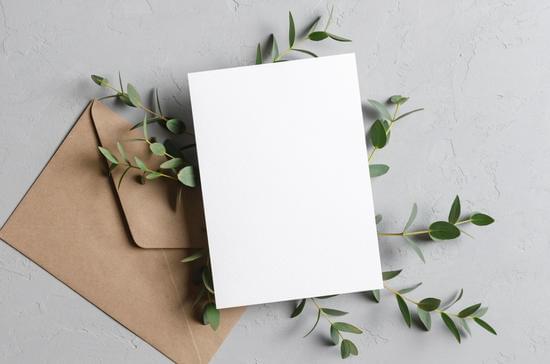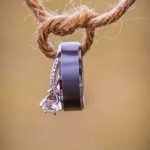Addressing an envelope for a wedding card may seem like a simple task, but it holds great significance in the realm of wedding etiquette. The way you address your envelopes sets the tone for the entire wedding invitation, making it essential to get it right. In this article, we will delve into the traditional and modern addressing options, provide a step-by-step guide, and offer special considerations for different family structures.
Properly addressing wedding card envelopes is not only about ensuring that the invitation reaches its intended recipient but also about showing respect and courtesy. It is a reflection of the care and thoughtfulness that goes into every aspect of planning a wedding. Whether you choose to honor tradition or opt for a more contemporary approach, understanding the importance of addressing envelopes correctly is crucial for any couple preparing to tie the knot.
From classic etiquettes to unconventional ideas, we will explore the various aspects of addressing wedding card envelopes in detail. Whether you are inviting local guests or have international attendees on your list, our comprehensive guide will help you navigate through this essential part of wedding preparation with confidence and style.
Traditional Addressing Etiquette
When it comes to addressing envelopes for wedding cards, traditional etiquette plays a significant role. Understanding the basics of traditional addressing etiquette can help you maintain decorum and respect for the occasion. Here are some key points to consider when adhering to traditional addressing etiquette for wedding card envelopes:
- Use titles: When addressing envelopes for a wedding card, it is important to use appropriate titles such as Mr. Mrs. Dr. etc. This adds a level of formality and respect to the address.
- Include full names: It is customary to include the full names of the recipients on the envelope. For example, if you are addressing a married couple, you would write “Mr. John Smith and Mrs. Jane Smith.”
- Respect hierarchy: If you are sending a wedding invitation to a family with children, be sure to list the parents’ names first, followed by the children’s names in order of age.
Following these traditional addressing etiquette guidelines can help ensure that your wedding card envelopes convey an appropriate level of respect and consideration for your guests.
In addition to using proper titles and full names, it is also important to pay attention to the format of the address itself. Traditionally, addresses on wedding card envelopes should be written out in full without abbreviations. This means spelling out words like “Street,” “Avenue,” “Apartment,” and “Post Office Box.” Taking these extra steps demonstrates attention to detail and sets an elegant tone for your wedding invitations.
Ultimately, understanding and implementing traditional addressing etiquette when preparing wedding card envelopes sets the stage for a formal and respectful event. By taking care with these small details, you can convey your appreciation for your guests’ presence at this special occasion.
Modern Addressing Options
In today’s modern world, there is no one-size-fits-all approach to addressing envelopes for wedding cards. While traditional etiquette certainly has its place, many couples are opting to break tradition and put their own creative spin on how they address their wedding card envelopes. This can add a personal touch to the invitation and reflect the unique style and personality of the couple.
One modern addressing option that has gained popularity is using informal language and unconventional formatting when addressing envelopes. Couples may choose to use first names only, for example, or opt for a more casual tone in their wording. This can create a more relaxed and laid-back vibe for the wedding invitation, especially if the event itself is not adhering to strict formalities.
Another way couples are breaking tradition with creativity is by incorporating non-traditional elements into the envelope addressing process. This could include using custom-designed stamps, adding personalized stickers or wax seals, or even hand-painting or calligraphy for an extra special touch. These unique additions not only make the envelope stand out but also show guests that this wedding will be anything but ordinary.
In addition to language and formatting, modern couples are also exploring alternative ways of addressing envelopes altogether. Some are opting for digital calligraphy services, while others are embracing technology by using e-vites or online platforms to send out their invitations. And with many weddings now being more inclusive of diverse family structures and relationships, such as same-sex marriages or blended families, there is greater flexibility and openness in how envelopes can be addressed.
Step-by-Step Guide
Addressing an envelope for a wedding card may seem like a simple task, but it is important to do it correctly to show respect and consideration for the recipients. Whether you are following traditional etiquette or adding a modern twist, the way you address the envelope sets the tone for the wedding celebration. Here are some step-by-step guidelines on how to address an envelope for a wedding card:
1. Gather your supplies: Before you start addressing the envelopes, make sure you have all the necessary materials, including high-quality envelopes, a pen with waterproof ink, and any decorative elements or embellishments you plan to use.
2. Write the recipient’s names: Begin by writing the recipient’s names on the envelope. If the couple is married or living together, write their names together on one line. If they are not living together, each person’s name should be written on a separate line.
3. Add the address: Next, write the full postal address of the recipient on the envelope. Make sure to include all relevant details such as street address, city, state/province, and postal code.
4. Include special titles: If one or both of the recipients hold special titles such as “Dr.” or “Honorable,” make sure to include these before their names as a sign of respect.
5. Consider inner envelopes: If you are using inner and outer envelopes for your wedding invitations, make sure to address both envelopes accordingly.
Following these steps will ensure that your wedding card envelopes are addressed with care and attention to detail. This small gesture will not go unnoticed by your guests and will set a positive tone for your upcoming wedding celebration.
Special Considerations
When it comes to addressing wedding card envelopes, it’s important to consider the different family structures and dynamics that may be present. From divorced or separated parents to blended families, there are various scenarios that require special consideration in order to properly address the envelope and ensure all parties feel respected and included.
Divorced or Separated Parents
In the case of divorced or separated parents, it’s essential to navigate this situation delicately. If one parent has remarried, traditional etiquette dictates that their new spouse should be included on the envelope.
However, if this arrangement does not suit the family dynamic, it is perfectly acceptable to send separate invitations to each parent. Communication is key in these situations, so be sure to have open discussions with the couple and their families regarding how they would like the invitations addressed.
Blended Families
Addressing envelopes for blended families can also present challenges. In instances where both biological parents and stepparents are involved in hosting the wedding, it’s crucial to ensure that everyone feels acknowledged and respected. One option is to list all parents’ names on the envelope if space allows, using “and” or “together with” between each set of parents’ names. If this format is not feasible, separate invitations can be sent to each household.
Sibling Situations
When siblings are old enough to receive their own invitation, it’s appropriate to address separate envelopes for them – even if they are living at home with their parents. Alternatively, siblings who are minors can be listed on their parents’ invitation using “and family”.
Understanding these special considerations and having open communication with the couple and their families will ensure that all wedding card envelopes are addressed with thoughtfulness and consideration for different family structures.
Tips for Choosing the Right Writing Tool and Ink for Addressing Envelopes
Choosing the right writing tool and ink for addressing envelopes is an important step in ensuring that your wedding card envelopes look elegant and professional. Whether you choose to handwrite or print the addresses, the tools and ink you use can make a significant impact on the overall presentation of your invitations.
When it comes to choosing the right writing tool, consider using a high-quality pen with a fine tip to ensure clear and precise handwriting. Gel pens or calligraphy pens can give your envelopes a polished look, while traditional ballpoint pens may not provide the same level of sophistication.
In terms of ink, it’s essential to use a smudge-proof and waterproof option to prevent any potential mishaps, especially if you are sending out envelopes during rainy or humid weather. Black or dark blue ink is typically recommended for formal occasions like weddings, as they are considered classic and timeless choices.
It’s also worth considering using custom stamps or printed labels for addressing your envelopes, especially if you have a large number of invitations to send out. This can save time and ensure consistency in the presentation of your wedding card envelopes.
Whichever option you choose, be sure to test it on a sample envelope first to ensure that the ink does not bleed or feather on the paper. By taking these factors into consideration, you can elevate the appearance of your wedding card envelopes and make a memorable impression on your guests.
| Writing Tool | Ink |
|---|---|
| High-quality pen with fine tip | Smudge-proof and waterproof ink (black or dark blue) |
| Gel pen or calligraphy pen | Custom stamps or printed labels |
Addressing Envelopes for International Guests
When addressing envelopes for international guests, it’s crucial to be culturally sensitive and follow proper protocol. From understanding different naming conventions to customs related to addressing envelopes, there are several factors to consider when sending wedding card invitations to guests from different countries.
Understanding Different Naming Conventions
Different cultures have distinct naming conventions, and it’s essential to be mindful of these when addressing envelopes for international guests. For example, in some cultures, the last name comes before the first name. In others, people have both a family name and a personal name. Understanding these naming conventions will help you address the envelope correctly and show respect for your international guests.
Customs Related to Addressing Envelopes
In addition to naming conventions, there may be specific customs related to addressing envelopes in different countries. For example, in some cultures, titles are very important and should always be included when addressing an envelope. In others, using certain colors or symbols on an envelope may have negative connotations. It’s important to research and understand these customs so that you can address the envelopes appropriately.
Personalizing Invitations for International Guests
When sending wedding card invitations to international guests, consider personalizing the invitation by adding a note in their native language or including cultural elements that are meaningful to them. This shows thoughtfulness and consideration for your international guests’ backgrounds and helps them feel welcomed and valued as part of your special day.
By being mindful of cultural sensitivity and proper protocol when addressing wedding card envelopes for international guests, you can ensure that all of your invitees feel honored and respected. Taking the time to understand different naming conventions, customs related to addressing envelopes, and personalizing invitations will make a meaningful impact on your guests from around the world.
Common Mistakes to Avoid When Addressing Wedding Card Envelopes
Addressing wedding card envelopes is an important part of the wedding process, as it sets the tone for the event and shows respect to your guests. However, there are common mistakes that should be avoided when addressing these envelopes to ensure they are properly delivered and received. By being aware of these potential pitfalls, you can ensure that your invitations are handled with care and reach their intended recipients in a timely manner.
One common mistake to avoid when addressing wedding card envelopes is using incorrect titles or names. It’s crucial to double-check the spelling of your guests’ names and their proper titles before writing them on the envelope. This attention to detail shows respect for your guests and ensures that they feel valued and appreciated.
Another mistake to avoid is using abbreviations or informal language on the envelope. When addressing wedding card envelopes, it’s essential to use formal language and avoid any shortcuts or informal terms. This adds a touch of elegance and formality to the invitation, setting the tone for the upcoming wedding celebration.
It’s also important to avoid using outdated address information when addressing wedding card envelopes. Make sure to verify your guests’ addresses before sending out invitations, as people often move or change addresses. This extra step will prevent delivery issues and ensure that your invitations reach your guests without delay.
| Common Mistakes | How to Avoid |
|---|---|
| Using incorrect titles or names | Double-check spelling and proper titles before writing |
| Using abbreviations or informal language | Use formal language and avoid shortcuts |
| Using outdated address information | Verify guests’ addresses before sending invitations |
Final Touches
In conclusion, addressing wedding card envelopes is a crucial step in the wedding invitation process. Whether you choose to stick to traditional etiquette or opt for more modern and creative options, the way you address the envelopes sets the tone for your wedding and reflects your attention to detail and thoughtfulness. The envelope is the first thing your guests will see, so it’s important to make a good impression from the start.
One special consideration when addressing envelopes for a wedding card is how to address an envelope for a wedding card if you have different family structures among your guests. It’s important to be inclusive and respectful of all family members, whether they are traditional or non-traditional. Taking the time to properly address each envelope will show your guests that you value their presence at your special day.
When adding final touches to your addressed envelopes, consider adding personalized details and decorative elements such as wax seals, custom stamps, or calligraphy. These extra touches can truly elevate the presentation of your wedding invitations and make them stand out in a memorable way. No matter how you choose to address your envelopes, remember that it’s an opportunity to showcase your personality as a couple and make a lasting impression on your guests.
Frequently Asked Questions
What Do You Write on the Front of a Wedding Card Envelope?
On the front of a wedding card envelope, you would typically write the names of the bride and groom. This can be done in a formal or decorative manner to indicate the special occasion being celebrated.
Do You Write Mr and Mrs on a Wedding Card?
When addressing a wedding card, it is not necessary to write “Mr. and Mrs.” unless that is how the couple prefers to be addressed. Some couples may prefer their individual names or use a different title altogether, so it’s important to consider their preference.
How Do You Write a Married Couple’s Name on an Envelope?
When writing a married couple’s name on an envelope, it is customary to use both of their full names. For example, “Mr. John Smith and Mrs. Mary Smith.” If they have different last names, both should still be included for formality’s sake.

I have been involved in marriages for over 20 years helping couples and singles understand more about them.





